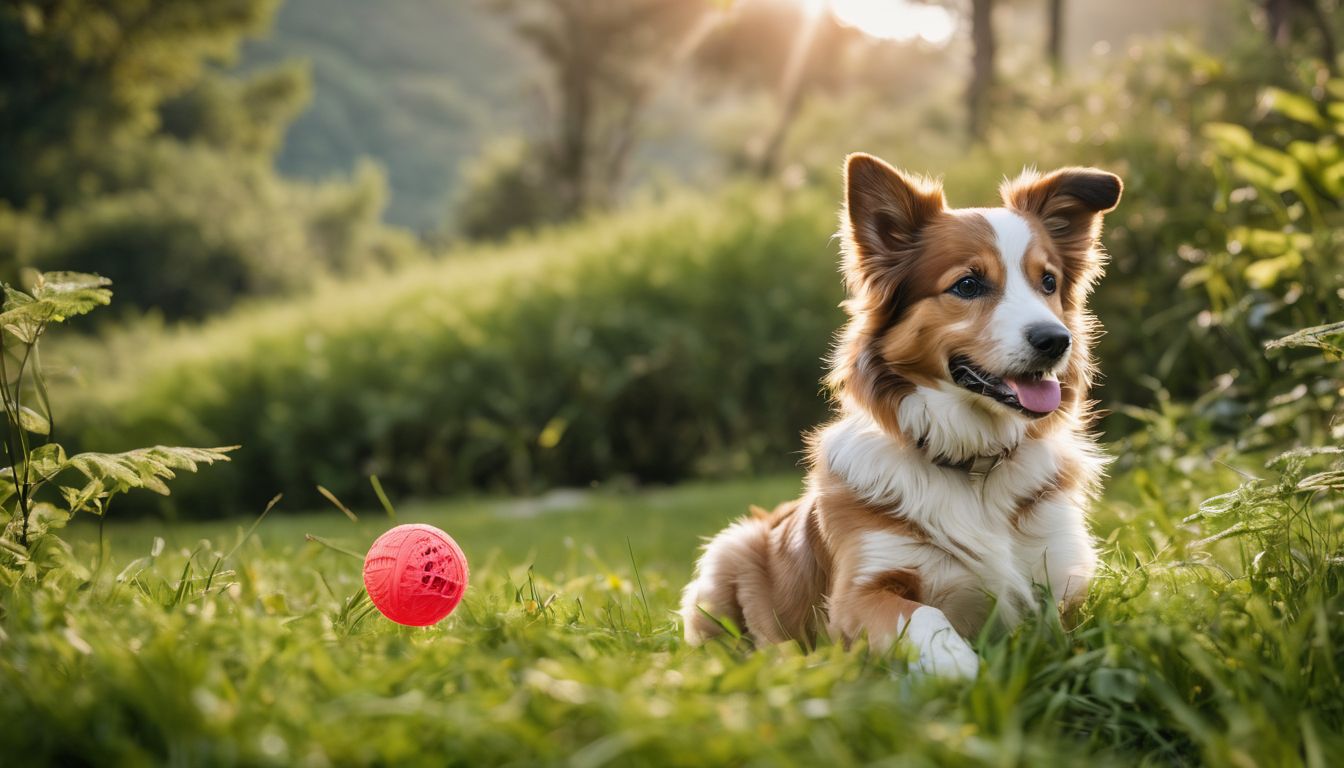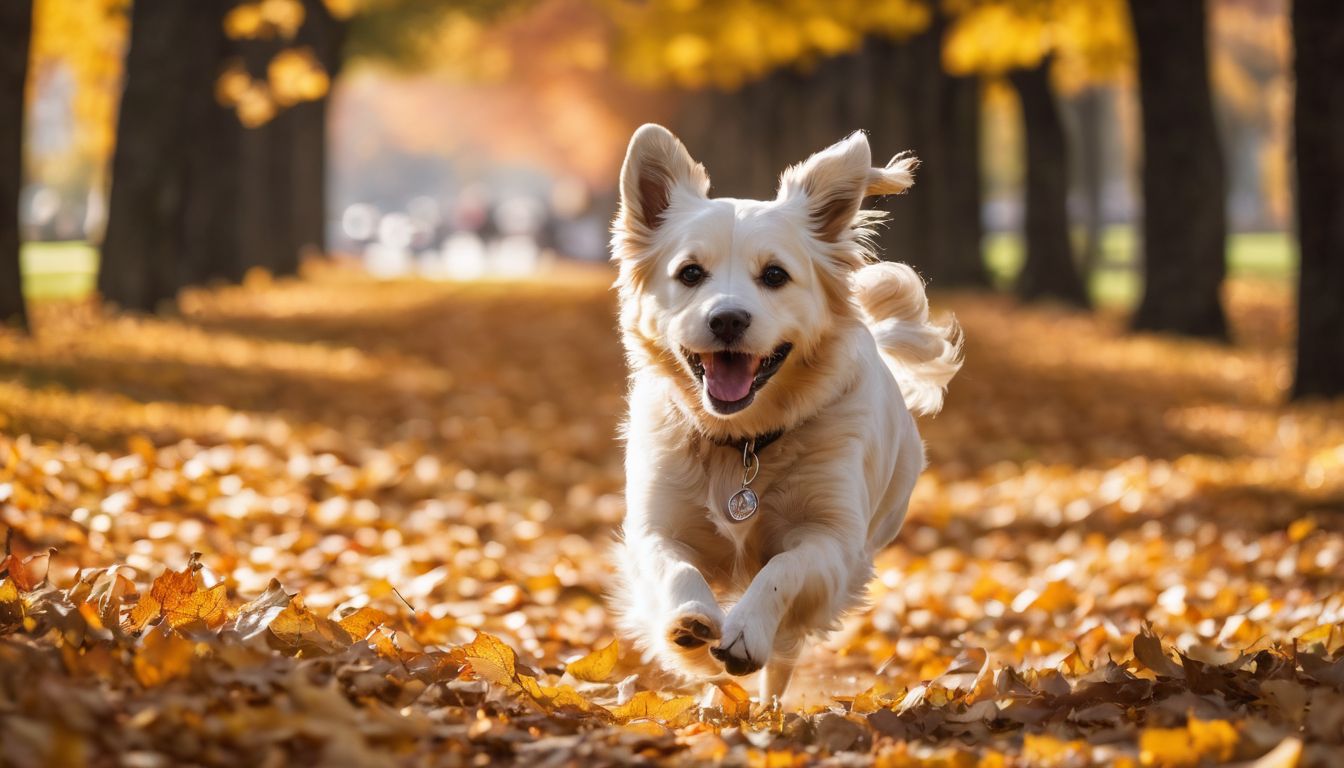Welcoming a new pet into your home can be as daunting as it is exciting. Many first-time owners worry about providing the best care for their furry friends. Our guide offers practical advice to ensure you’re well-prepared to tackle the joys and challenges of pet ownership.
Dive in for invaluable tips that promise peace of mind!
Key Takeaways
- Before adopting a pet, it’s crucial to research their needs and prepare your home. This involves choosing the right vet, puppy-proofing living spaces, and gathering essential eco-friendly supplies like biodegradable waste bags and sustainable bedding.
- Training should start early using positive reinforcement methods. Different communication ways like body language and verbal cues are key to understanding each other. Consistent routines in feeding, exercising, and training will help set expectations for your new friend.
- Regular health checks with an environmentally conscious vet are important for preventing diseases. Proper grooming keeps pets clean while using non-toxic products protect them and the environment. Knowing what is toxic to pets ensures their safety from common household hazards.
Preparing for a New Pet
Before bringing a new pet into your home, it’s essential to do thorough research, assess your time and budget, find a reputable veterinarian, puppy-proof your home and purchase all necessary supplies.
These steps will set you up for success as a first-time pet owner.
Do your research
Delving into the world of pet ownership requires a thorough understanding of what your new companion will need to thrive. Explore different types of pets and breeds, considering their specific environmental requirements and how well they align with your lifestyle.
For those passionate about conservation, look into eco-friendly pet care options such as biodegradable waste bags or sustainable pet food choices that support environmental welfare.
Learn about the common health issues and dietary needs related to the animal you plan to adopt. It’s essential to familiarise yourself with training methods suited for your future pet’s species and breed.
This knowledge not only prepares you for responsible ownership but also ensures a smooth transition for both you and your new furry friend into a shared life that respects nature’s delicate balance.
Assess your time and budget
Before bringing a new pet into your home, it’s crucial to assess your time and budget. Consider the time required for feeding, exercising, and training your pet. Factor in regular vet visits, grooming needs, and potential emergency medical expenses.
Budget for supplies such as food, toys, bedding, and grooming tools. Research the costs associated with microchipping and vaccinations. Additionally, think about how a pet may fit into your lifestyle in terms of travel and social activities.
To ensure responsible ownership within environmentally conscious practices means considering both the environmental impact of pet care products you intend to use on our furry friends – from food packaging to waste management- alongside budget estimating for eco-friendly choices when possible.
Find a veterinarian
As a first-time pet owner, finding the right veterinarian is essential. Look for a veterinary practice that aligns with your values and supports environmental conservation efforts.
Ensure the vet offers holistic and environmentally friendly approaches to pet care, including non-toxic treatments and eco-friendly products. Research their vaccination protocols, preventive care measures, and approach to animal welfare.
Once you’ve found an environmentally conscious vet who shares your values, schedule an initial consultation to discuss your pet’s needs. This will establish a good relationship from the start – one based on mutual trust and commitment to responsible pet ownership.
Puppy-proof your home
- Secure cupboards and electrical outlets to prevent access to hazardous items and reduce energy consumption.
- Keep houseplants out of reach as some can be toxic to pets and affect their health.
- Store household chemicals in locked cupboards or high shelves, away from your pet’s reach.
- Use baby gates to block off areas that are not pet – friendly, such as the staircase or rooms with delicate items.
- Safely stow away small objects like coins, batteries, and rubber bands that could pose choking hazards.
Purchase necessary supplies
After puppy-proofing your home, it’s essential to gather the necessary supplies for your new pet. Here’s what you’ll need:
- A comfortable, eco – friendly bed made from sustainable materials for your pet to sleep and rest in.
- Stainless steel or ceramic food and water bowls that are durable and easy to clean.
- Biodegradable waste bags for responsible waste disposal during walks and outdoor activities.
- Eco – friendly toys made from natural materials like organic cotton, hemp, or recycled rubber to provide mental stimulation and exercise.
- Non – toxic cleaning products to maintain a healthy environment for your pet without harming the planet.
- Natural grooming supplies such as bamboo brushes, organic shampoos, and biodegradable grooming wipes to keep your pet clean and happy.
Training and Communication
Start training your new pet early and consistently to establish good behaviour. Explore different forms of communication with your pet to build a strong bond and understanding.
Start training early and consistently
Begin training your pet from an early age to build good habits and establish a strong bond with your pet. Use positive reinforcement techniques, such as treats and praise, to encourage desired behaviours instead of punishment.
- Consistent training sessions will reinforce learning.
- Establish clear communication through cues and commands.
- Use rewards like treats and playtime to motivate your pet.
- Practice patience when teaching new skills.
- Enrol in obedience classes for socialisation and structured learning.
- Seek professional help if needed, for a holistic approach to training.
Explore different forms of communication
Transitioning from early training, it’s important to explore different forms of communication with your new pet. Beyond verbal commands, body language and positive reinforcement techniques are essential for effective communication.
Consistency in hand signals and tone of voice will help build a strong bond between you and your pet. Using positive reinforcement such as treats or praise will encourage desired behavior, creating a mutual understanding between you and your pet.
Understanding the environmental cues that can affect your pet’s behaviour is crucial to maintaining a healthy relationship with them. By observing their reactions to various stimuli in their surroundings, owners can better understand what triggers their pet’s behaviour and respond appropriately using positive reinforcement methods.
Establish a routine
Establishing a routine is essential for your new pet’s well-being. Regular feeding times, walks, and playtime help them feel secure and build a strong bond with you as their owner.
Consistency in your communication and training methods will also support the establishment of positive behavioural patterns.
By incorporating regular exercise, mental stimulation, mealtimes, and rest periods into their daily routine, you are promoting a balanced and healthy lifestyle for your pet. This not only benefits their physical health but also contributes to reducing stress levels and fostering an overall sense of security in their environment.
Proper Care and Maintenance
Choose the right food for your pet based on their age, breed, and health needs. Consider microchipping to help locate your pet if they ever go missing. Schedule regular vet visits and stay on top of grooming needs to keep your pet healthy and happy.
Choose the right food
Selecting the appropriate food for your pet is crucial for their health and wellbeing. Look for high-quality, sustainably sourced options that align with your environmental values.
Research brands that use natural ingredients and ethical production methods to lessen the impact on the environment while providing optimal nutrition for your furry friend.
Consider consulting with a veterinarian or a pet nutritionist to ensure you choose food that meets your pet’s specific dietary requirements. This step not only supports animal health but also aligns with environmentally conscious practices by promoting sustainable and responsible pet food choices.
Consider microchipping
When considering the well-being of your pet, microchipping is essential to ensure their safety. This simple procedure involves inserting a tiny chip under your pet’s skin, containing unique identification information.
In case they get lost or wander off, this technology significantly increases the chances of being reunited with them. Microchipping also aligns with environmentally conscious practices by reducing the need for plastic tags and collars that can end up in landfills or ecosystems.
Looking after your new pet goes beyond providing love and care. Thinking about proper identification through microchipping not only ensures your pet’s protection but also promotes sustainable and environmentally friendly practices in pet ownership.
Schedule regular vet visits
To keep your pet healthy and happy, it’s essential to schedule regular vet visits. This helps in ensuring that your furry friend receives the necessary care and preventive treatments to maintain their well-being.
- Regular Check-ups: Taking your pet for routine health check-ups at the veterinarian’s office allows for early detection of any potential health issues.
- Vaccinations: Keep track of your pet’s vaccination schedule as it’s crucial in preventing common diseases.
- Dental Care: Regular dental check-ups are vital for maintaining good oral hygiene and preventing dental diseases.
- Parasite Control: Regular vet visits help in monitoring and controlling parasites such as ticks, fleas, and worms to ensure your pet remains healthy.
- Senior Pet Care: As your pet ages, regular vet visits become even more important to address age-related health concerns.
Grooming needs
Pet grooming is essential for maintaining your pet’s health and hygiene. Regular brushing helps remove loose fur, prevents mats, and keeps the coat shiny. It also allows you to check for any skin issues or pests like ticks and fleas.
Bathing, however, should be done sparingly to avoid stripping natural oils from the skin. Routine nail trimming prevents overgrowth that can cause discomfort or affect mobility. Pay attention to ear cleaning too; it helps prevent infections.
When it comes to grooming environmentally friendly products are available so consider choosing biodegradable shampoos and conditioners that are free from harmful chemicals which contribute positively in supporting conservation efforts of our environment.
Managing Challenges
Be prepared for setbacks as a first-time pet owner and seek support from resources available. It’s important to know what is toxic to your pet and how to handle any challenges that may arise.
Be prepared for setbacks
Prepare yourself for setbacks as a first-time pet owner. Acclimate to the idea that challenges will arise, and be ready with patience and resilience. Seek support from experienced pet owners or professionals when faced with difficulties in caring for your new companion.
Expect hurdles along the way, but remember that overcoming them will only strengthen your bond with your pet and make you a more knowledgeable and responsible owner.
Seek support and resources
Explore local pet owner groups, animal shelters, and online forums for valuable advice and assistance. Connect with experienced pet owners who can offer guidance and support on various aspects of pet care – from training tips to grooming recommendations.
Additionally, consider enrolling in a puppy training class or consulting a professional dog trainer to build your skills and confidence as a new pet owner. Accessing these resources will help you navigate the challenges that come with pet ownership and ensure the well-being of your furry friend.
Remember to seek expert advice on sustainable and eco-friendly pet care products that align with your environmentally conscious values. Look for locally sourced, organic, or biodegradable options for food, grooming supplies, and accessories.
Know what is toxic to your pet
It’s important to be aware of items in your home that might be toxic to your pet. Being environmentally conscious means ensuring the safety of your pet and choosing eco-friendly options when possible. Some common household items that can be toxic to pets include:
- Chocolate – containing theobromine and caffeine, can cause vomiting, diarrhoea, and even seizures in pets.
- Plants such as lilies, azaleas, and daffodils can be toxic if ingested by pets.
- Certain human foods like onions, garlic, grapes, and raisins are harmful to pets.
- Household chemicals including certain cleaning products and antifreeze should be kept out of reach.
- Medications – both prescription and over-the-counter medications can pose a threat if consumed by your pet.
- Pest control products should be used cautiously and stored securely away from pets.
- Keep electrical cords out of reach as chewing on them can lead to electric shock or burns for your pet.
Conclusion
In conclusion, being a first-time pet owner is both exciting and challenging. Remember to educate yourself on proper care, training, and communication with your new furry friend. Make sure to provide the necessary care and maintenance for your pet’s wellbeing.
Be prepared to navigate challenges that may arise and seek support when needed. Always ensure you are aware of potential hazards to keep your pet safe and happy in their new home!
FAQs
1. What are the top pet care tips for first-time owners?
As a new pet owner, make sure you learn about proper animal care, like regular grooming, training your pet well, and keeping up with essential vaccinations.
2. Where should I start when it comes to puppy care?
Beginner dog owner advice often suggests starting with a good routine of feeding, sleeping, and house-training for effective puppy care.
3. Can you give me some tips on choosing the right pet supplies?
Start with a new pet owner starter kit that includes food bowls, a comfy bed, toys for playtime and items necessary for pet grooming and cleanliness.
4. What common mistakes should I avoid as a first-time dog owner?
First-time ownership can be daunting; avoid common pitfalls such as neglecting early-stage training or misunderstanding your dog’s behaviour needs.
5. How do I deal with new pet owner anxiety?
Educate yourself on beginner pet care tips—knowledge is empowering—and remember that every new dog owner goes through this learning curve!
6. Is there specific training advice for first-time owners who have just gotten a puppy?
Yes! Beginner dog owner training advice strongly emphasises consistency in commands and rewards to help your furry friend understand what behaviours are desired.





